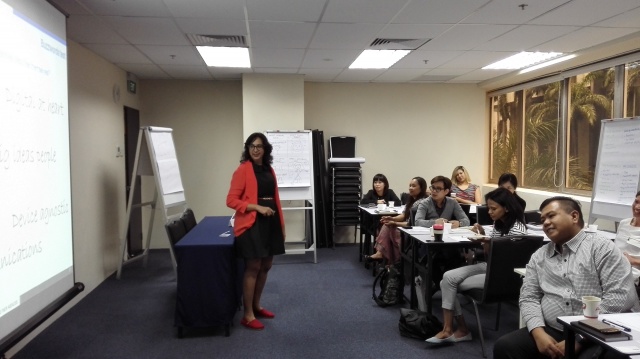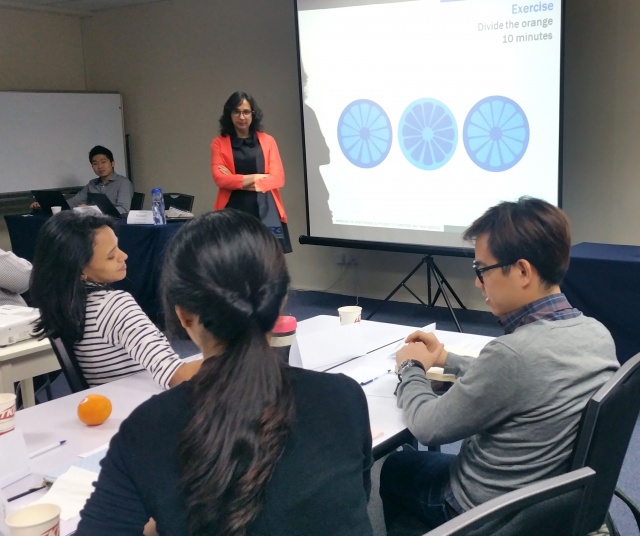
In times of growing fragmentation of the agencies, shrinking budgets and less reliance on AORs, it is making it tough for clients to choose their agency partners.
Furthermore, there is often a disconnect on what client’s want and agencies THINK clients want. In the agencyScope study conducted by R3, where the top 300 CMOs of the region are interviewed to get perspective on their evolving needs and their views on agencies, it was discovered that 26% clients change agencies because of ‘lack of effectiveness’ while ‘lack of creativity’ came in second place at 21%. In 2010, less than one-third of clients put importance on effectiveness. Changing times, changing needs.
So what exactly are clients looking for when they run a pitch these days? How do clients choose an agency that works best for them? Here are some key truths- straight from the horse’s mouth.

Truth No. 1: Agencies don’t ask enough questions
Agencies overestimate how much they know about the client brief and business and fail to use the opportunity to ask clients more questions about the business objectives and plans. Second guessing the client is one of the biggest pitfalls that can cause the agency to lose at the pitch, or even with an existing client. Gaurav Gupta, Marketing Director, ASEAN at Kimberly-Clark advises agencies to “Talk more. Simply ask the right questions.”
Truth No. 2: Doing work that is right
Clients don’t always know what they want. They may only think they do. Onus lies on the agency to present work that is right- right by the consumer, right for business, right for the brand. “If I had to choose between award-winning work vs. effective work, I will use effective work. Every time,” says Charmaine Wong, Marketing Consultant at Pizza Hut Restaurants Asia.
Truth No. 3: It’s never just about the money
Phei Yeng Han, Procurement Category Manager- Commercial at Fonterra Brands, put it very well when she counseled the agencies that “Clients are willing to pay if agencies help solve real life problems.” Market volatility is a real world problem. An agency response which helps address that issue will stand a higher chance at winning the business. Understanding the business challenges is a very critical capability that Fonterra looks for when choosing their agencies.
Truth 4: Innovation is not a buzzword for clients
It can be frustrating for agencies when clients demand innovation, but upon sharing the ideas they are accused of ‘pushing it too far’. Advice from marketers is that clients truly desire innovation, but it must be innovation within the context of the business and the brand and not ‘innovation for innovation sake.’ Ideas need to be pitched correctly – is it a brand building idea or a business delivery one? Gaurav Gupta says “Digital allows for tracking of various intermediary KPIs, like app downloads for example, which gets agency folks excited. But it did not help sell any product, which makes the innovation futile for the marketer.”
However, clients acknowledge that they are equally guilty as they try to adopt a ‘test and learn approach,’ but blame the agency when the initiative fails. It’s a learning curve for both parties and understanding the intention behind the requested innovation can help in closing the gaps.
Truth 5: Chemistry can be gauged at a pitch. It’s not just a gut instinct
Clients judge chemistry at the pitch based on the attributes below:
a) Can the teams engage the clients with the right discussions and questions?
b) Can the agencies challenge the clients in a way that is constructive?
c) Are agency team members order takers or thinkers? This is judged in Q&A sessions as well as in response to the pitch challenge.
d) Did the agency demonstrate a passion for the business?
Truth 6: Case studies should be positioned strategically
Clients review case study submissions based on the criteria below:
a) Distance between the case study and team, i.e. if work is done out of New York and showcased in a Singapore pitch, it would carry little or no value for clients.
b) Similar industry or target audience, i.e. examples of work from a similar category or similar target audience is appreciated, e.g. a telco who wants to sell more pre-paid cards will like to see a case on youth engagement from an unrelated category.
c) Team behind the work, i.e. if the case study was done by at least one of the team members present in the pitch meeting, it carries a lot of weight.
Final piece of advice – Move beyond transactions and engage the clients in a strategic business conversation. That is sure to get their attention.
Seema Punwani is a Principal Consultant with R3.





